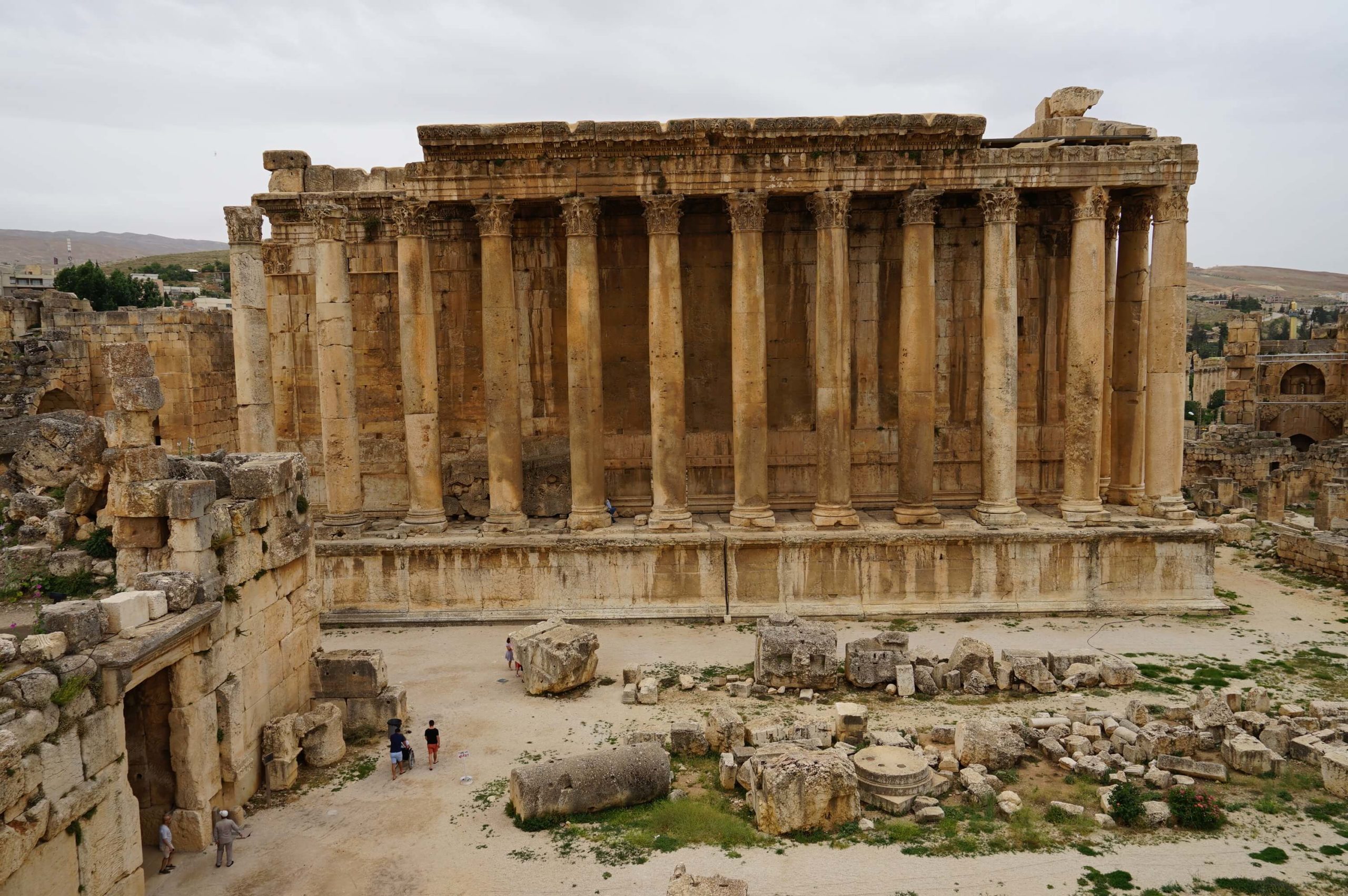Heliopolis, the Sun City
Our second of the major tours while visiting Lebanon was for the actual highlight of the trip itself, the fascinating Roman city of Baalbeck with its impressive constructions, some of the largest ever created across the entire former empire. This was once again, an organised tour departing from our base Beirut, same as we did the day before when visiting Byblos, Jeita and Harissa; but also including another two great sights: the small city of Anjar with its beautiful Umayyad ruins and to finalise the tour, the Ksara Caves now in use by Chateau Ksara, Lebanon’s oldest wine estate where a tasting will be offered. Both Baalbeck and Anjar are UNESCO World Heritage Sites listed, hence the added value that means for us.
While there are still some more amazing places in the country to see, we can say from our trip we are very satisfied for now, and certainly will return another occasion. Fingers crossed that by then it is at least as great as it is now; a beautiful and friendly country, safe wherever it can get, and not turning into any crisis or even a war as it’s sadly with the neighbouring country Syria.
On the same note as I explained for the previous guide on Byblos, you can find lots of tour operators over the internet offering similar day trips, however pay attention to what’s and what is not included. From this experience I found tours which did not include lunch and entrance fees to the sites, quite silly right? While other agencies were listing everything included and even at more competitive price. It’s a matter of some research then all is straightforward, and if you want to have it already done, let me tell you which one is the best for the tours we did in this country (as of May 2018): Viator. Not only the best in the quality and quantity of tours they offer, but also one of the most trustful out there as it belongs to TripAdvisor. This is the tour we selected, click here.
For more information about the sites you will visit in this tour, I would recommend you to read some of the great articles in Wikipedia. Lebanon’s currency is the Lebanese Pound (LBP, LL). Please note that any price reference is true as from when this guide was created, therefore check prices in advance as with the time they change.
What you will see
- Baalbeck One of the most impressive former Roman cities in the empire, and for sure one of the greatest this far east. It is among the finest examples of Imperial Roman architecture at its apogee. The great level of preservation coupled with the sheer size of some of the constructions makes this place quite unique and truly worth travelling to Lebanon to admire it. Among its ruins you will see the largest monoliths ever quarried which the Romans took as foundation for some of the structures.
- Anjar This small city is home to the greatest Armenian population in the country. Almost everyone is Armenian. Famous for its souks and laid back appearance, is mostly known for the ruins of what was one of the greatest Umayyad cities, dating from the 8th century. Perfectly designed upon the Roman plan with two main avenues the Decumanus and Cardo, intersecting at its centre and all along these main streets the shops.
- Ksara Upon the discovery of the caves in the heart of the Bekaa Valley in the 19th century, Château Ksara settled here their winery, the main producer and most popular in the country. It is Lebanon’s oldest, largest and most visited winery.
Photo Gallery
[flickr_set id=”72157697745380841″]
